This Caucasian Shepherd dog is a very big dog that originates from the Caucasus Mountains. Bred to defend livestock from large predators, these giant dogs are one of the biggest breeds in existence today. They are known by a couple of different names, including the Caucasian Shepherd, Russian Bear Dog, and Caucasian Ovcharka. He is also sometimes mistaken for the King Shepherd, and the Shiloh Shepherd but they are entirely different breeds.
Like the Bullmastiff and English Mastiff, these dogs are surprisingly laid back despite their large size. Some owners have even described them as seemingly lethargic. They don’t move much but are very protective of their family because of their guarding history.
These giants require a very specific family to take care of them. They are not a dog for the average household, mostly due to their large size and training requirements. But, if you have the time and space to dedicate to these gentle giants, they can make wonderful family dogs.
Breed History

The Caucasian Shepherd has a pretty straightforward history. This breed originates from the Russian Caucasus Mountains, hence their name. These mountains are actually home to many other larger dog breeds.
The ancestors of the Caucasian Shepherd were livestock guardian dogs. Like the German Shepherd, they defended sheep from a variety of dangerous animals, including wolves, jackals, and bears. They were also general guard dogs and bear hunting dogs, especially during times of increased bear activity. Overall, their job was to protect their people’s land and property.
In the 20th Century, Soviet breeders began a breeding program featuring some dogs from the Caucasus Mountains. From this program, the Caucasian Shepherd was born. The modern Caucasian Shepherd was bred from a variety of different breeds from the Caucasus Mountains, such as the Georgian Shepherd.
This breed appeared outside the Caucasus for the first time in the 1930s in Germany. Despite its short history, the Caucasian Shepherd is a fully standardized breed. That means it can compete in show rings and has recognized standards the dogs must live up to. They are recognized by many major kennel clubs. However, they are still seeking full recognition by the American Kennel Club, where they are still considered a Foundation Stock Breed.
Temperament

The Russian Bear Dog is a guard dog through and through. They were bred and used for years to guard flocks of livestock and acres of land. These instincts are still very much in existence today. They cannot be trained out – it is just how the dogs are.
These instincts, combined with the dog’s massive size, can make them difficult to handle. While bite statistics are not available due to the rarity of this breed, without proper socialization and training, these dogs can be aggressive towards strangers and unnecessarily provocative against other animals.
They are very independent and not necessarily reliant on humans. They were bred to do their job by themselves without the command of a human caretaker. Because they are designed to make split-second, life-and-death decisions by themselves, they will attempt to do this even as a companion dog.
In other words, when someone knocks at the door, this breed is going to make a decision on whether or not they are a threat by themselves – without necessarily looking to you for instructions. This is why socialization is so important. You want your dog to make the correct decision, and he can’t do that unless he is introduced to many different people at a young age.
A dog who never meets anyone outside of the family is going to consider everyone else a threat.
These dogs are also very fearless. They were made to hunt bears, after all. This can sometimes come into play during homelife as well – like when your Caucasian Shepherd tries to attack a “threatening” car. These dogs require a fenced-in backyard in order to stay safe. Luckily, these dogs are also very intelligent. They learn quickly and are good at keeping themselves out of trouble when socialized.
Caucasian Shepherds are also a very low energy breed. They are not energetic or excitable, so you don’t have to worry about them accidentally knocking someone down in a bout of excitement. In fact, they are described as almost lethargic by many owners. They spend most of their time laying around and not doing much.
When they feel threatened, though, they are very noisy and intimidating. They obviously make good guard dogs, though in our modern times they might be a little over-the-top for these purposes. Certain strains of the Russian Bear Dog are more aggressive than others. It really depends on what the dog was bred for. Those who were bred for guarding purposes are usually more territorial and aloof, while dogs in companion lines are more laidback.
With that said, all of these dogs can be territorial and aggressive if not properly socialized. They have a tendency to be territorial around other dogs, especially, though they are usually protective of dogs they consider “in their family.”
Size and Appearance

The Caucasian Shepherd is a massive dog. According to the American Kennel Club, they can weigh between 70 to 170 pounds. However, even larger versions do exist and are not uncommon. Males are nearly always bigger than females. The minimum weight for females is 99 pounds, while the minimum weight for males is 110. They also stand very tall. They can reach up to 30 inches, with the minimum height being 23 inches. Like the American Mastiff, males are taller than females.
On top of this dog’s raw size, they are also extremely muscular. Strongly bonded and muscular, these dogs can produce quite a lot of damage if they want to. They were bred to protect sheep from bears and wolves, and it shows in their modern form. They are similar in both size and weight to the Tibetan Mastiff, and are often compared to them by potential dog owners.
Coat and Colors

These dogs are also quite fluffy. They have a heavy coat to protect them from the elements, which can make them seem even bigger. This coat is double-layers, with a soft inner coat and coarse outer coat. Their fur can actually vary in length quite a bit. There are some Russian Bear Dogs with very long coats and others with moderately short coats. It really just depends on the exact genes they inherit. It is very difficult to tell what length fur a particular puppy will have when they are an adult, as it usually does not grow out all the way until adulthood.
Long-haired Russian Bear Dogs have a “mane” around their neck, while those with shorter hair do not. This is part of why people refer to them as Russian Bear Dogs. Medium coats will have some of this feathering as well, but it will not be nearly as pronounced. Their coloring ranges from white to rust. Black markings are extremely common in this breed, with nearly all dogs possessing them.
Health

These dogs are very healthy. They were bred for practical purposes only until very recently, and are therefore much healthier than most other purebred dogs. They usually live healthy lives with few chronic diseases. Their average lifespan is 10-12 years, which is quite high for such a large breed.
For comparison, a Saint Bernard only lives 8-10 years. When cared for properly, you can expect this dog to be with you for many years. With that said, this dog is prone to a few key disorders. The risk of many of these can be lowered with proper care, so it is important to be familiar with them.
Hip Dysplasia in Caucasian Shepherds
Hip Dysplasia is common in large breeds, so it is no surprise that the Caucasian Shepherd is prone to this disorder. The condition occurs when the hip socket does not form correctly. This prevents the hip bone from properly fitting into the socket. The fit is either too loose or too small. In severe cases, the bone can hardly be in the socket at all. Furthermore, the end of the bone is not properly formed and can be jagged. This can cause unusual wear-and-tear.
To reduce damage and pain, the dog will typically try and reduce movement in the hip. This leads to a “bunny hop” – a telltale sign of the disease. Other symptoms include stiffness, difficulty moving, lethargy, irritability, and biting or scratching at the joint. Hip dysplasia is the number one cause of hip arthritis, so symptoms are often very similar to arthritis.
This disorder is heritable. If a dog’s parents have it, they are more likely to have it as well. Luckily, most Russian Bear Dog breeders will not breed a dog with hip dysplasia, cutting down on its prevalence. However, many puppy mills and unethical breeders will produce puppies with these dogs anyway. Because of this, it is important to check on the health of the parents before purchasing a puppy.
There are many environmental factors that contribute to this disorder, however. Neutering a dog before they are full-grown can more than double their chances of developing this problem. The repetitive motion of the joints before three months of age also increases the risk, while normal exercise and playing reduce it. Repetitive motion includes things such as jogging and using stairs.
Obesity in Caucasian Shepherds
The Russian Bear Dog is a very low-energy breed, which makes them more likely to become obese. They will not get the proper amount of exercise if left to their own devices and will require some encouragement. Leaving them outside in a fenced in backyard is not enough to prevent obesity.
An animal is obese when their body weight is at least 20% higher than their optimal weight. However, even being slightly over the recommended weight can have a negative impact. Furthermore, once a dog is obese, it is difficult to get them to shed the excess fat. Prevention is far easier. Don’t wait until they’re already overweight to get your pet exercising.
The causes of obesity are simple: too many calories in and too few out. Pets should be on an appropriate diet for their size and energy levels. Middle-aged dogs are also at higher risk. When left unchecked, obesity can have serious effects, including increasing the risk of joint problems. Digestive organs and breathing capacity can also be negatively affected. While preventing this disease is the easiest way to go, reversing the weight gain is also possible. Just like people, pets burn fat by increasing their exercise and lowering their food intake.
Exercise and Living Requirements

The Russian Bear dog is a giant couch potato. If you let them lay around and do nothing all day, they probably would. However, this is not good for their health. Their tendency to be very low energy can result in obesity, which we discussed early. It is important for them to be regularly exercised.
With that said, these dogs will not need to be exercised as much as some other breeds. They might be large, but they are not particularly energetic. Exercise needs to be done for health purposes, not because they need to run off steam.
A quick fifteen-minute walk twice a day is all these dogs need. Of course, you should keep an eye on their weight and be prepared to increase their exercise as needed. Remember, these dogs will not get the proper amount of exercise by simply being given the opportunity to roam. Instead, they need to be actively walked or played with. Putting them outside in a fenced-in yard to exercise themselves is not going to work.
While they are very low energy, they do have the endurance for walking long distances and hiking. Of course, this is assuming that you keep them in good shape. Just like people, these dogs need to be kept in fit condition if you want them to go hiking with you. Letting them lay around the house for years and then expecting them to go on a hike is not going to end well.
Because these are very large dogs and are prone to hip issues, they should not be exercised heavily when they are puppies. Instead, puppies should be played with at a moderate pace or encouraged to run around in a fenced-in area. Forced running and steep hikes are not appropriate for dogs of a younger age as it can cause damage to their still-developing joints.
On top of their physical needs, these dogs are also quite intelligent and will benefit from regular mental stimulation. These dogs do not tend to get hyperactive or destructive if their mental needs are not met. However, that does not mean that they cannot get bored.
Obedience training is very useful for this purpose. These dogs need plenty of guidance anyway, so you might as well kill two birds with one stone. A short fifteen-minute sessions once per day is all a Caucasian Shepherd really needs. This should be plenty of time for you to practice a command or two and get your dog mentally worn-out.
If your dog seems restless or becomes destructive, it could be because they are bored. In these cases, increasing the number of daily training sessions, taking your dog to obedience classes, or stimulating them in another way can curb this behavior. Puzzle toys are quite useful for this breed, though it can be difficult to find toys that are large enough to accommodate their size.
Training

These dogs are massive and therefore need plenty of training and socialization. A tiny, untrained dog can’t do much damage if it misbehaves. However, a large dog can. These dogs are very intelligent. They learn new commands easily and are pretty good at figuring out what you want them to do. They were bred to assess situations independently, so their intelligence is quite high.
However, they are also very independent. They are not bred to listen to commands or answer to a master. Instead, they worked independently and guarded livestock by themselves or in pairs. Independence is good for these situations; it helps them make their own decisions. However, independence is not so good during obedience training.
Because of their independence and stubbornness, these dogs should begin training early. It is never too early to train a puppy. As soon as they are old enough to be adopted, they can begin training. Of course, the first few weeks of training should involve very short sessions. However, these early weeks can lay a foundation that makes it easier to train your dog later.
We highly recommend puppy classes for this dog. These classes introduce key commands, such as sit stay, and leave it, leash walking, and are wonderful for socialization purposes. It is vital to get these dogs walking on a leash appropriately before they get too large. Trying to walk a 170-pound dog who pulls constantly is not only stressful but nearly impossible.
Socialization

Socialization is also important for the Russian Bear Dog. Without proper socialization, these dogs will be aggressive and territorial. While genetics to play a role in temperament, environmental factors contribute a lot. As soon as a Caucasian Shepherd gets their shots, they should be taken out on almost a regular basis to play with other dogs, meet new people, and see new places. A fearful dog is an aggressive dog, so it is important that your dog is introduced to plenty of the world like a puppy.
You should also bring people into your home regularly when your Caucasian Shepherd is still young. These dogs are notoriously territorial. They need to learn that not every stranger that walks into your home is a threat. This lesson is learned by bringing friends and family members into your home to meet your puppy regularly. This experience should be positive for everyone involved.
You should pay special care to introduce your Caucasian Shepherd to plenty of different dogs as well. This breed’s territorial nature tends to come out most around other dogs, so it is essential that they are introduced to other dogs in public and at home. Join a puppy playgroup. Take group obedience classes. Have your friends bring their dogs over to your home. Even if you have other dogs, it is important to bring dogs your puppy doesn’t know into your home.
Nutrition

Caucasian Shepherds eat a lot of dog food, as you could probably expect. However, it is not enough to just give them any food. You need to feed them dog food recommended for the Caucasian Shepherd breed. This will help to prevent obesity and other health problems.
There are a couple of rules you should follow when choosing a diet for your canine. Firstly, grain-free is not always the best choice. Despite some misconceptions, grain is not actually bad for dogs. They have adapted to eat it; it does not harm them. Furthermore, grain-free foods can be harmful to our dogs in certain situations, which brings us to our next point.
Secondly, avoid foods that contain legumes, peas, and potatoes. These ingredients have been linked to heart problems, especially in larger breeds. They can disrupt a canine’s digestive system and prevent them from absorbing the nutrients and vitamins they need. Grain-free foods usually contain these ingredients as a filler, which is a big reason why we don’t recommend them for most dogs.
Thirdly, avoid “boutique” diets. Expensive is not always better. It is almost always better to go with a large, well-known company when it comes to your dog’s food. If a dog food contains exotic ingredients, it is likely that it has not been properly tested. You should also make sure to match their age with their food. When Caucasian Shepherds are puppies, use a giant breed puppy formula dog food to promote their growth.
Finally, avoid dog foods with exotic proteins as the main protein source. This includes things like duck, boar, and lamb. These proteins have not been thoroughly tested in dogs, so we don’t know if they actually provide for their nutritional needs. These diets are often also grain-free and contain other exotic ingredients as well.
Grooming

These dogs have a lot of hair, especially if they have longer coats. They are big dogs, which means grooming can take quite a while, even if their hair is short. They shed consistently throughout the year and can easily leave hair all over your house. Grooming is very important for this breed if you want your couch to be visible underneath the dog hair. This breed will also shed particularly bad twice a year when they shed their inner coat layer. This is called “blowing” a coat and can produce an insane amount of hair. Often, dogs will have visibly less hair after this process.
During this period, we recommend getting your dog professionally groomed. Getting all that excess hair out will make your canine feel a lot better and reduce the amount of hair around your house. While this can be done at home, it is often faster and less stressful for your canine if you leave it up to the professionals.
Long coated Caucasian Shepherds will need groomed every day. They are prone to matting and need to be brushed out to prevent sores. Because they are so long, plan to spend a while on grooming them. Luckily, most of them do not mind grooming at all. If you just let them lay there while you brush them, they typically do fine. You can grab something like the Oster Shedmonster which will make deshedding a breeze.
Short-coated variants will need less grooming, though a weekly brushing is still a good idea.
They only need to be bathed when necessary. Of course, because of their size, you will have difficulty bathing them in a traditional bathtub. Often, a “bath” is really just a wash with the hose and some dog shampoo. Many professional groomers do not even have tubs big enough to fit these dogs. If you want them to have a full bath, we recommend calling around to find a groomer that can accommodate them.
Russian Bear dogs will also require the same regular maintenance as other breeds. Their ears will need to be cleaned regularly, especially if they are left floppy. While Caucasian Shepherds are born with floppy ears, they are often cropped. This is for aesthetic and health reasons. Floppy ears are more prone to infections, especially in long-haired dogs. If your Caucasian Shepherd still has floppy ears, plan on checking them regularly for infection.
You will also need to trim your dog’s nails regularly. If you begin grooming early in your dog’s life, this should be easy to do at home, especially if you get a professional to show you how. However, getting them clipped by a groomer is also an affordable option.
Puppy Costs

If you plan on getting your Russian Bear Dog from a breeder, expect to pay a minimum of $1500 and possibly more depending on the pedigree. These dogs are not cheap, and you should be prepared to see a higher price point, especially those that come from prized lines.
You’ll also need to make sure you are ready for other puppy costs, which will include dog crates (if you crate train), toys, trips to the vet, and pet insurance. Because this is a giant breed, you should be prepared for the biggest expense of all – dog food! Because Russian Bear Dogs eat a lot and grow quickly, dog food is a major expense, and you’ll want to make sure you have the right stage of food at every stage of their life.
Breeders & Rescues

Because the Caucasian Shepherd is a rarer breed, finding a reputable breeder is a must if you decide you want to go the purebred route and have to have a puppy. There are good resources for this, and the AKC even has a breeder directory now, so you can be sure that the pup you are adopting is of sound parentage. While there’s no guarantees your pup will be perfectly healthy for life, buying a puppy from a reputable breeder allows you to understand the lineage that your Caucasian Shepherd comes from.
While breeders are usually one of the more popular routes for this pup, we would always recommend you rescue when possible. Caucasian Shepherds do pop up at rescues, and usually you’ll see them in a Mastiff Rescue or Anatolian Shepherd rescue, where the staff is used to handling large and strong-willed dogs. We will always encourage you to adopt before you shop, so try your local giant breed rescue before heading off to a breeder, and you may just find the pup you are looking for.
Final Thoughts
The Caucasian Shepherd is a massive dog that requires plenty of room and training. If you have the space and time to dedicate to these dogs, they can make great pets.
However, you should ensure that you can provide them with proper care before adopting one. They might be big and beautiful, but that also means that eat tons of food, require lots of grooming, and need to be properly trained.
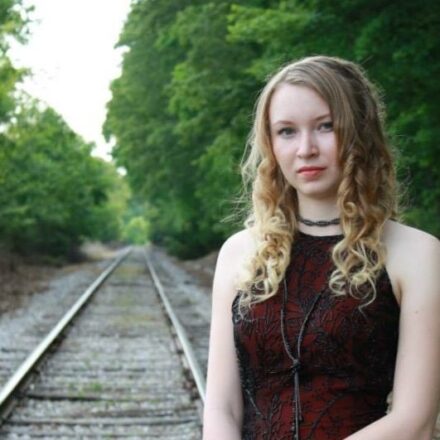
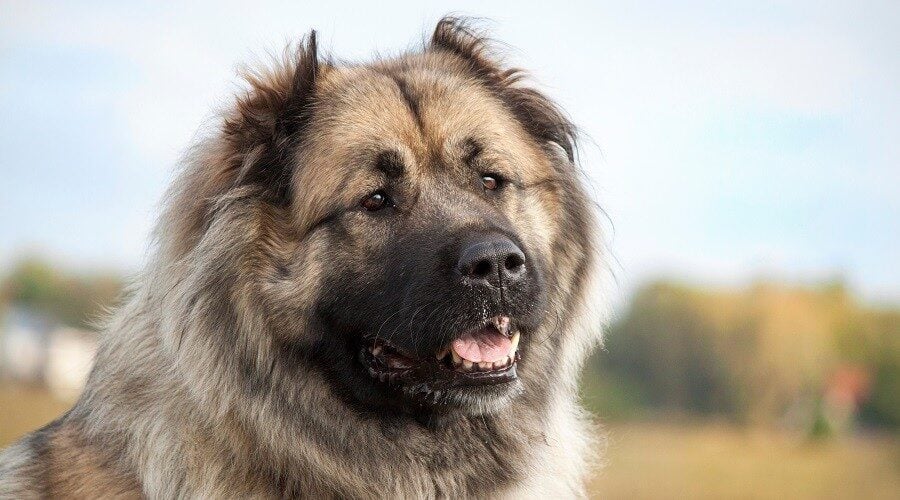

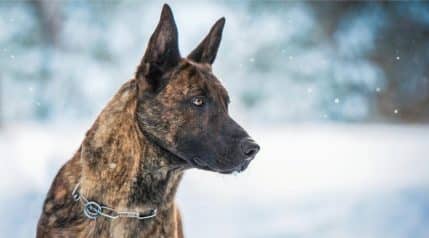
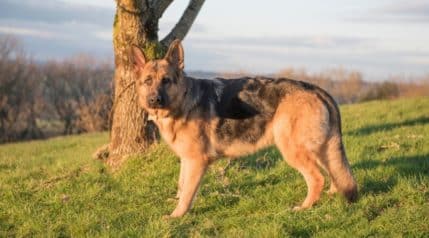
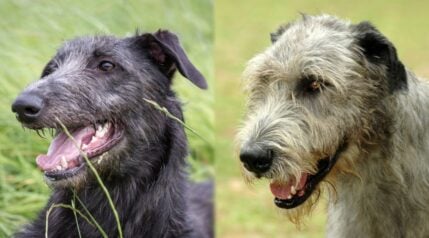
Who breeds these dogs in Victoria